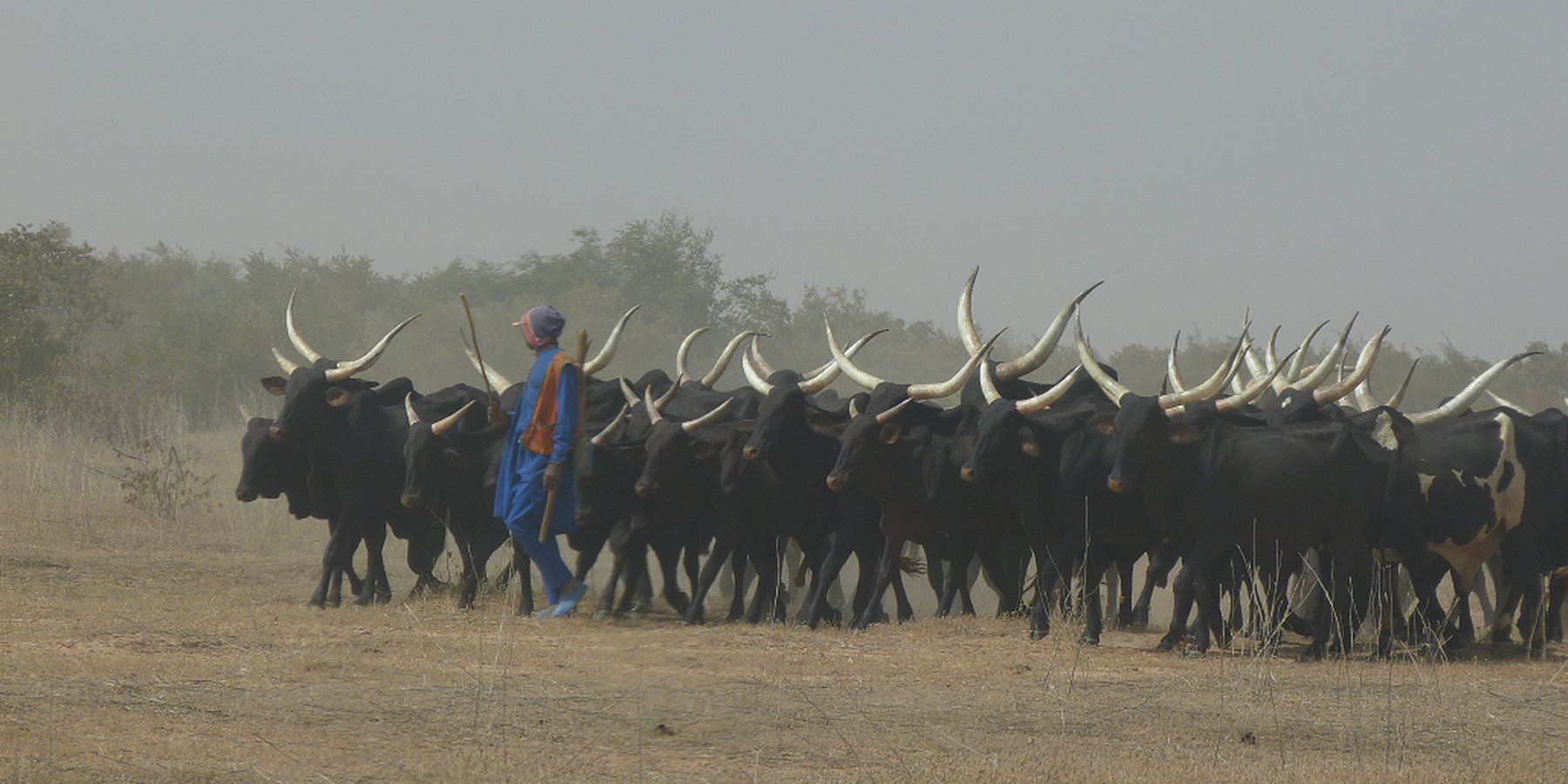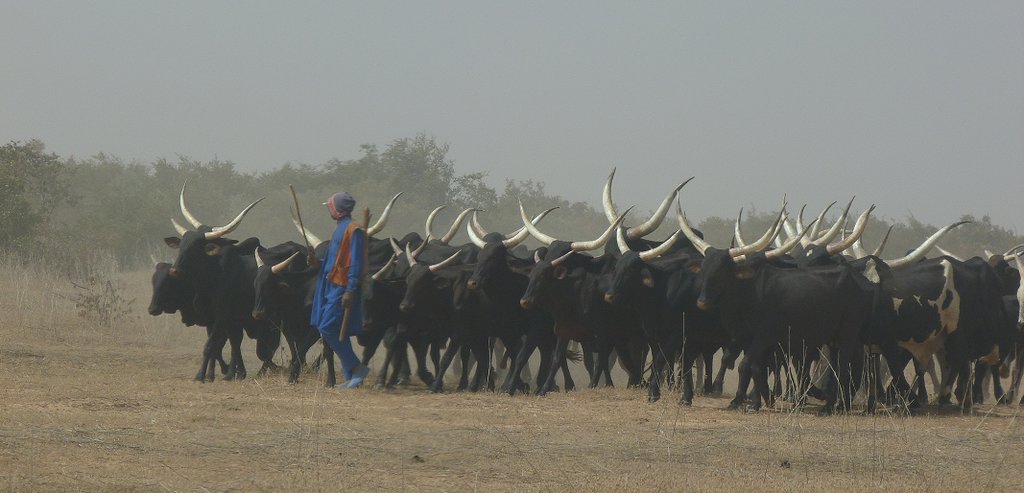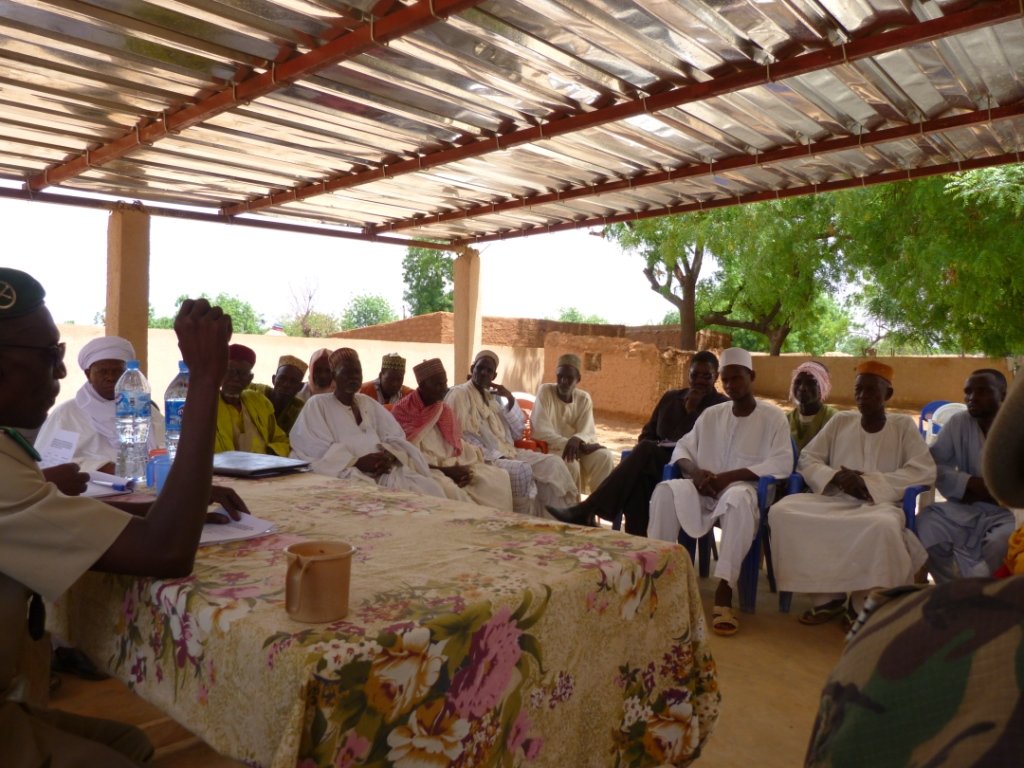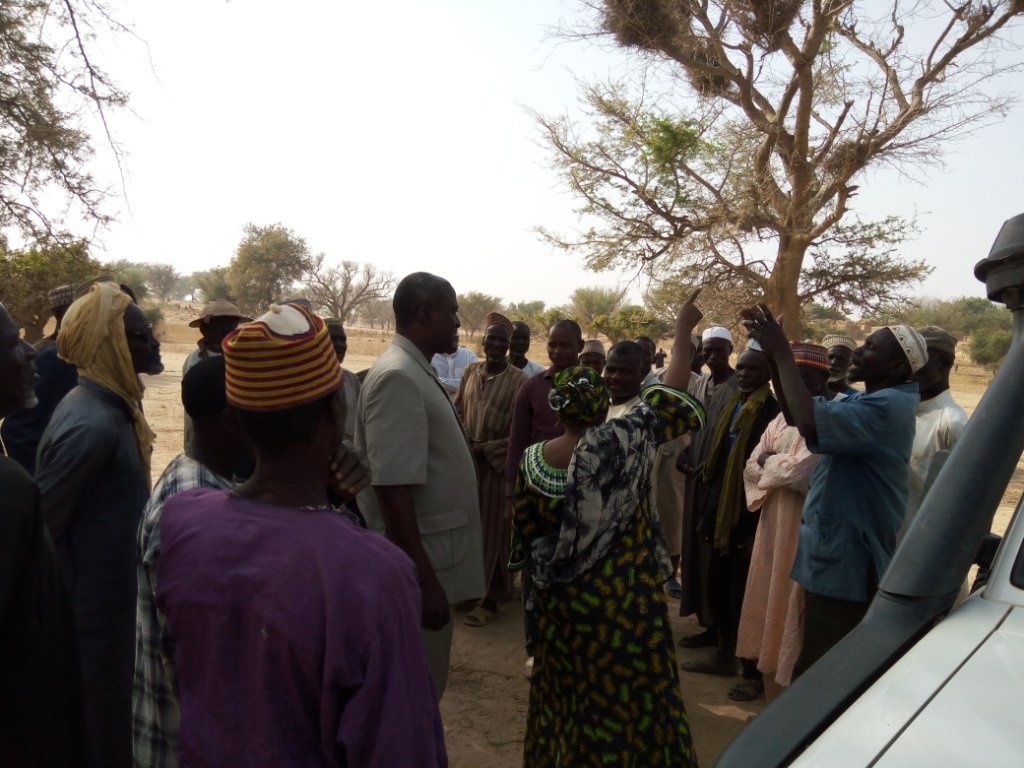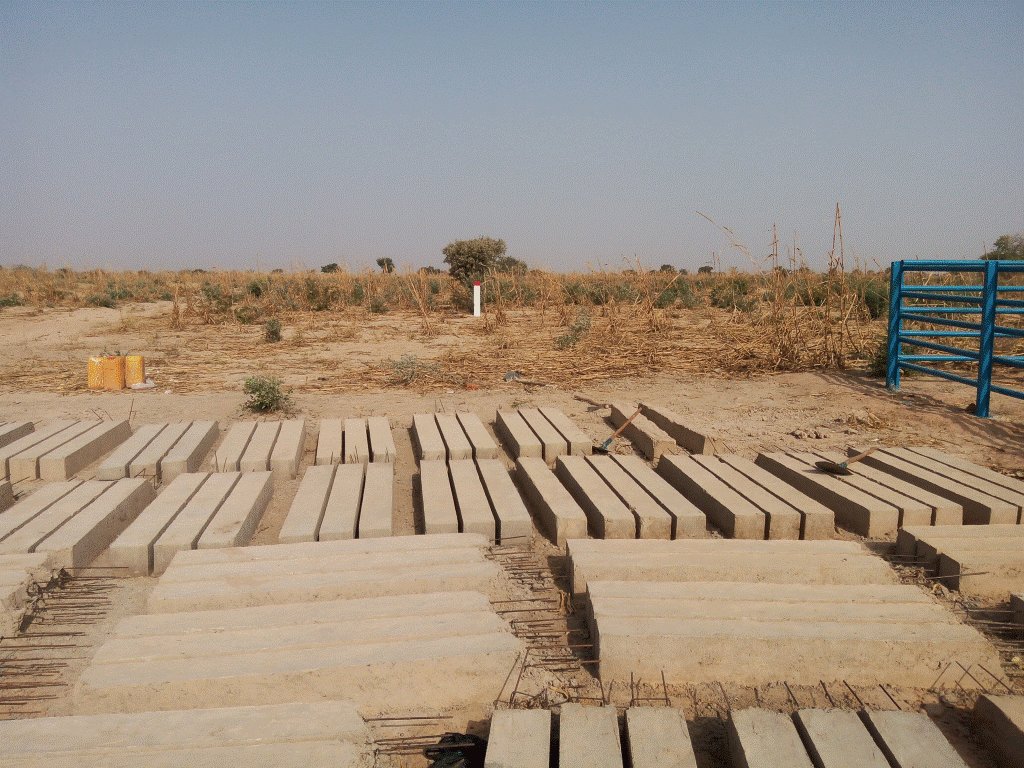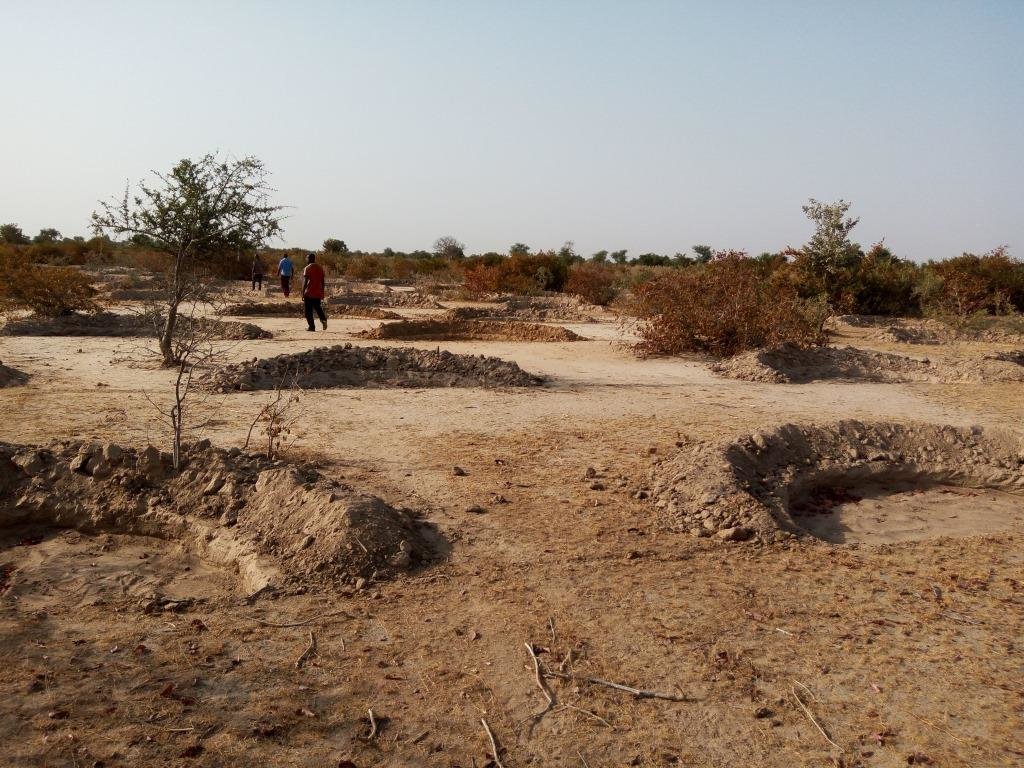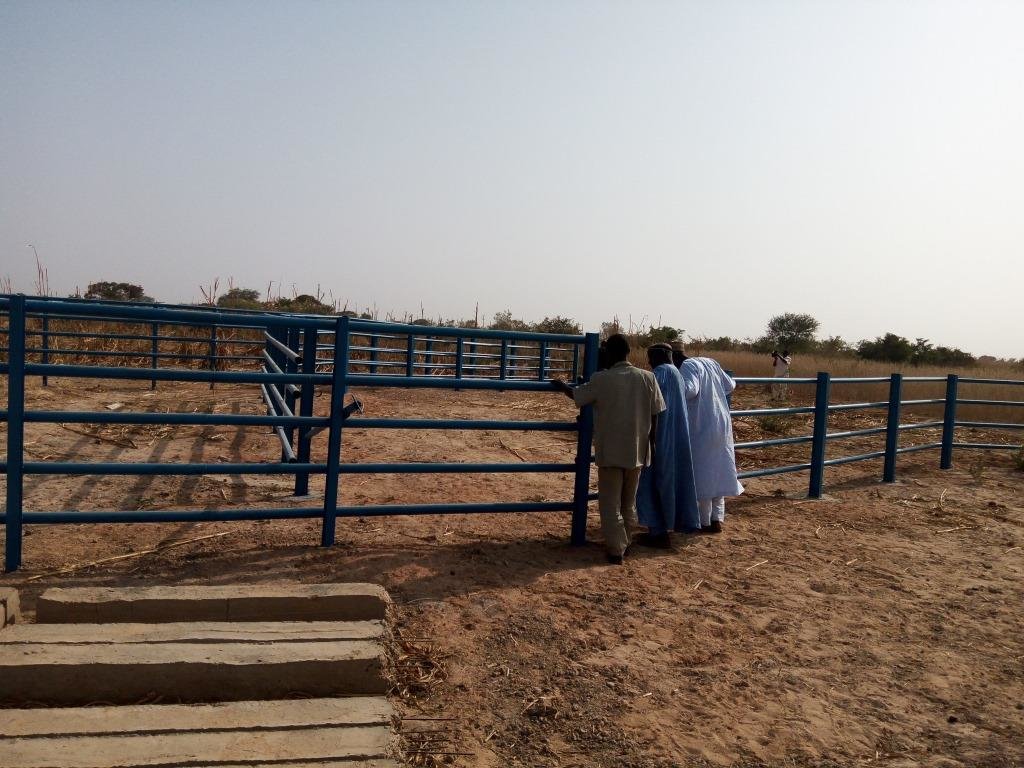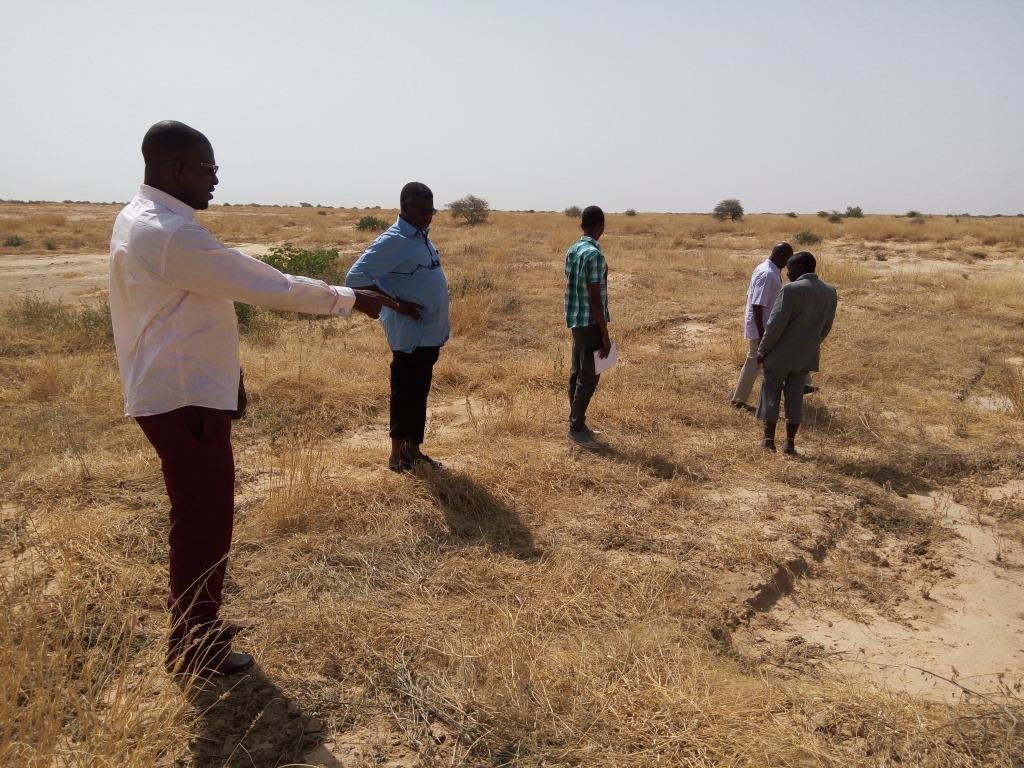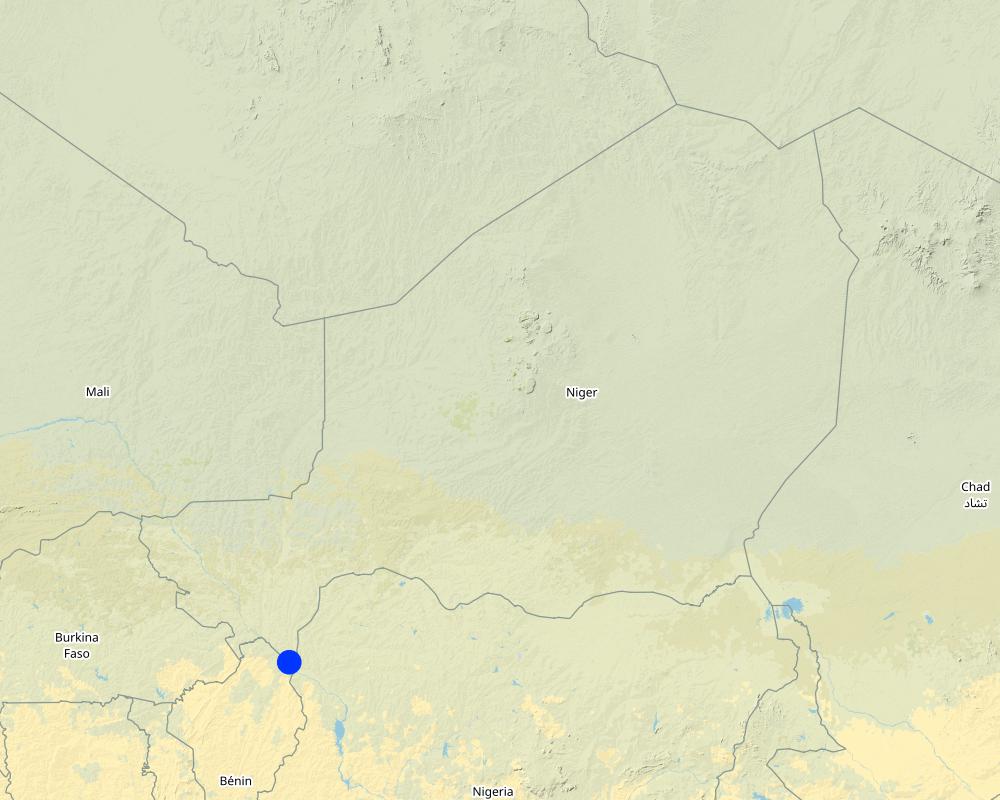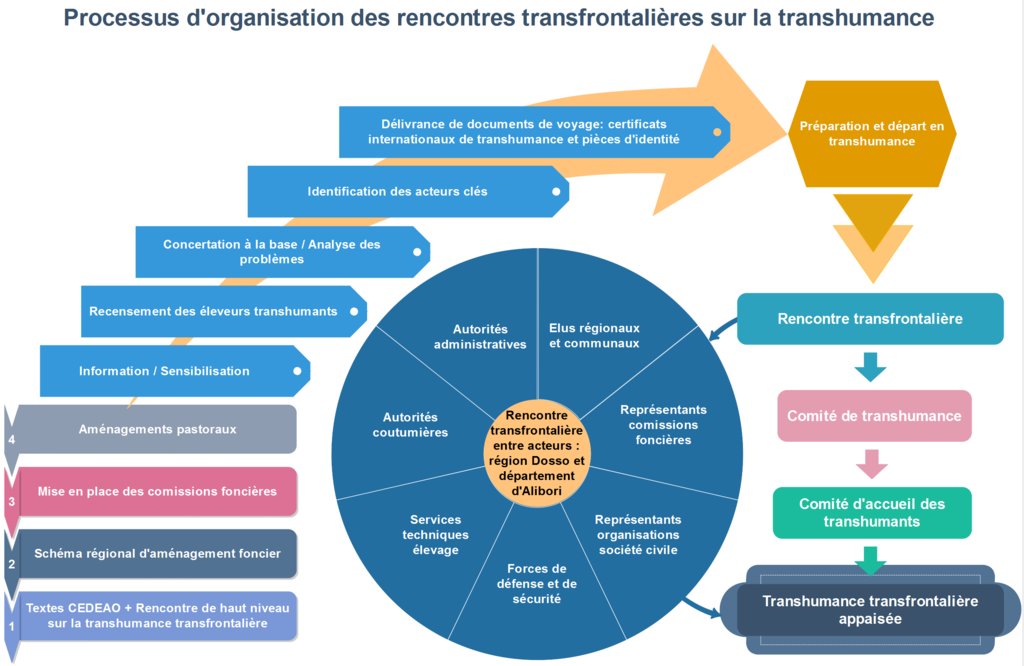Management of transboundary transhumance [Niger]
- Creation:
- Update:
- Compiler: Issaka DAN DANO
- Editor: –
- Reviewers: Rima Mekdaschi Studer, Simone Verzandvoort, Joana Eichenberger
Transboundary cooperation on transhumance
approaches_2850 - Niger
View sections
Expand all Collapse all1. General information
1.2 Contact details of resource persons and institutions involved in the assessment and documentation of the Approach
Key resource person(s)
SLM specialist:
MAHAMADOU GAMBO
+227 20 650 905 / +227 96 51 58 50
gambokabirou@yahoo.fr / Mah_gambo@yahoo.fr
Directorate of the Department of Livestock Keeping of Dosso
Dosso, Republic of Niger
Niger
regional elected representative:
OUMAROU Boubacar
+ 227 20 65 02 19 / + 227 96 06 16 27
boumarou89@yahoo.fr
Regional Council of Dosso
1st Vice-president of the Regional Council of Dosso
Niger
SLM specialist:
IDDE Ibrahim
+227 20 65 03 17
idde_ibrahim57@yahoo.fr
Regional Directorate of Livestock Keeping
Regional Directorate of Livestock Keeping, Region of Dosso
Niger
Representative of Livestock Keeping Associations:
MAOUDE Moussa
+227 97 26 49 96
Cooperative of Livestock Keeping Associations in Niger (CAPAN)
CAPAN Dosso
Niger
local elected representative:
YOUNOUSSA Moussa
+227 96 66 62 03
Rural municipality of Falmey
Municipality of Falmey, Region of Dosso
Niger
SLM specialist:
Name of project which facilitated the documentation/ evaluation of the Approach (if relevant)
Programme d’Appui au Secteur de l’Elevage au Niger (PASEL 7)Name of project which facilitated the documentation/ evaluation of the Approach (if relevant)
Book project: Guidelines to Rangeland Management in Sub-Saharan Africa (Rangeland Management)Name of the institution(s) which facilitated the documentation/ evaluation of the Approach (if relevant)
Vétérinaire Sans Frontière Belgique (VSF-Belgium) - Belgium1.3 Conditions regarding the use of data documented through WOCAT
When were the data compiled (in the field)?
01/06/2017
The compiler and key resource person(s) accept the conditions regarding the use of data documented through WOCAT:
Yes
2. Description of the SLM Approach
2.1 Short description of the Approach
Management of transboundary transhumance in order to create the conditions for conflict-free access to resources for livestock keeping in Niger and northern Benin.
2.2 Detailed description of the Approach
Detailed description of the Approach:
This approach involves multiple actors, and is based on cooperation between them in the border region between Benin and Niger. The aim is to handle the concerns of livestock keepers practicing transhumance, who are victims of harassment and conflicts related to access to resources for livestock. It is a framework of exchange between the various actors in charge of managing the mobility of livestock keepers across the border.
The approach aims at the appropriation and application by the multiple stakeholders of the community legislation on transboundary transhumance - as adopted by the Economic Community of West African States (CEDEAO). The context is increased competition for access to natural resources, exacerbated by the effects of climate change. The approach consists of: (i) implementing a framework for cooperative management of transboundary transhumance between Benin and Niger; (ii) ensuring wide dissemination of community legislation of the CEDEAO on the management of the transhumance practices, and (iii) enabling conflict-free and sustainable access to resources for livestock keeping in the two countries.
The main methods used are: (i) the development of the Scheme for regional Land Management (SAF); (ii) building the necessary infrastructure for livestock keeping (marking of corridors and grazing areas, restoration and management of rangelands, establishment of vaccination centres, etc.); (iii) the raising of awareness among livestock keepers, through the organisation of livestock keepers on the ground (grassroots land commission, local committee of transhumance); (iv) the organisation of transboundary and local for a; and (v) monitoring of the implementation of recommendations forthcoming from the meetings.
The process took place in several stages: the actors of the civil society and the livestock keeping services first identified, together with the livestock keepers, the difficulties related to the transhumance in the two countries. Next they proceeded to inform the livestock keepers and farmers about the community legislation of the CEDEAO. Under the responsibility of the authorities of the two countries, transboundary and local fora were organized periodically to discuss difficulties related to transhumance. The census of all transhumant livestock keepers enabled facilitation of the delivery of travel documents (International Certificate of Transhumance - CIT - and identity document). The committee for receiving the transhumant livestock keepers was established and is functional. It is composed of municipalities, the civil society, and heads of the livestock keepers. Its role is to receive and guide the livestock keepers and to facilitate their stay. A mechanism has been put in place to monitor the implementation of the decisions and recommendations during the periodic meetings between the parties.
The regional council is the contracting authority, and ensures the general coordination of the process, and the monitoring of the recommendations. The administrative and customary authorities participate in information and awareness-raising of the population, and in the management of conflicts. The municipalities implement the recommendations and facilitate access to travel documents. The role of the civil society organisations is to watch the process, to identify the key actors, and to inform and make aware the leaders of the livestock keepers and the transhumant livestock keepers. The services for livestock keeping issue the International Certificate of Transhumance (CIT), and take part in awareness-raising and census of the transhumant livestock keepers. The land commissions secure the resources for livestock keeping. The water and forestry services provide information about the management of protected and listed resources. The Program to Support the Livestock Keeping Sector (PASEL7) finances the process and provides technical support.
The livestock keepers have appreciated the participatory and inclusive character of the approach, which has enabled them to share their concerns with all key actors, and to use their language (Fulfulde) in the exchange during the sessions of awareness-raising. The livestock keepers have also appreciated the selection of the municipality of Karimama in Benin as the main entrance zone to Benin for transhumant livestock keepers. However, the livestock keepers regretted the poor logistical organisation of the sessions for awareness-raising, which did not enable participation of the maximum number of livestock keepers in any of the municipalities in Niger.
2.3 Photos of the Approach
2.4 Videos of the Approach
Comments, short description:
n/a
Location:
n/a
Name of videographer:
n/a
2.5 Country/ region/ locations where the Approach has been applied
Country:
Niger
Region/ State/ Province:
Region of Dosso in Niger, and Department of Alibori in Benin
Comments:
Corridor for transhumance between Niger and Benin
Map
×2.6 Dates of initiation and termination of the Approach
Indicate year of initiation:
2016
Comments:
The approach is a continuous process of reflection and actions between the legal entities on the border between Benin and Niger.
2.7 Type of Approach
- project/ programme based
2.8 Main aims/ objectives of the Approach
The objective of the approach is to achieve understanding, and application, of the community legislation on transboundary transhumance, which was adopted by the heads of State and Government of the Economic Community of West African States (CEDEAO) in order to prevent and reduce conflicts related to the mobility of livestock keeping, and to foster better use of resources for livestock keeping in the two countries.
2.9 Conditions enabling or hindering implementation of the Technology/ Technologies applied under the Approach
social/ cultural/ religious norms and values
- enabling
Facilitate the arrangement of social agreements in the process of securing land resources for livestock keeping.
- hindering
The difficulties are most often related to the ignorance of herders accompanying animals in transhumance. They are illiterate and lack knowledge of the regulations on mobility across the border.
availability/ access to financial resources and services
- enabling
Availability of funding from the Program to Support the Livestock Keeping Sector (PASEL7) to organize the process.
- hindering
Weak mobilization of other funding sources to ensure the co-funding of the cross-border meetings.
institutional setting
- enabling
Emergence of new actors like the local and regional authorities in the two countries.
- hindering
The meetings have not yet been formalized.
collaboration/ coordination of actors
- enabling
Existence of a framework for cooperation between multiple actors, and for synergy in actions, led by the Regional Council of Dosso.
policies
- enabling
Existence of laws and regulations governing the transboundary transhumance in the framework of the Economic Community of West African States (CEDEAO), and existence of an act on pastoralism and a rural code in Niger.
land governance (decision-making, implementation and enforcement)
- enabling
Existence of functional decentralized structures in the rural code of Niger and within the region of Dosso.
3. Participation and roles of stakeholders involved
3.1 Stakeholders involved in the Approach and their roles
- local land users/ local communities
Communities of Peul livestock keepers, generally young herders and their families.
They provide the information and profit from the actions.
- community-based organizations
Grass-roots groups of livestock keepers, who are members of the umbrella organisations of livestock keepers (Association for the Revitalization of Livestock Keeping in Niger - AREN, National Federation of Livestock Keepers in Niger - FENEN Daddo, Group of Cultural Action and Development of Young Livestock Keepers - GAJEL)
Awareness-raising and coaching of livestock keepers
- SLM specialists/ agricultural advisers
Decentralized services for livestock keeping
Issue International Certificates of Transhumance (CIT), participate in the awareness-raising of the livestock keepers, conduct the census of transhumant livestock keepers, carry out the vaccination of the animals.
- NGO
Organizations of livestock keepers (NGOs and associations)
Social mobilization and awareness-raising among the livestock keepers
- local government
Local and regional authorities: Regional Councils and municipalities
Program management, general coordination of the process, facilitating the issuance of civil status documents
- international organization
Swiss cooperation in Niger
Vétérinaires Sans Frontières, Belgium
Funding the process
Accompanying the process
If several stakeholders were involved, indicate lead agency:
n/a
3.2 Involvement of local land users/ local communities in the different phases of the Approach
| Involvement of local land users/ local communities | Specify who was involved and describe activities | |
|---|---|---|
| initiation/ motivation | interactive | The regional council planned the activity following discussions with livestock keepers from the region. |
| planning | interactive | Exchanges with the livestock keepers to specify problems and to suggest appropriate strategies and actions |
| implementation | self-mobilization | The initiative to practice transhumance and the compliance with regulatory requirements are within the competence of the livestock keeper. |
| monitoring/ evaluation | interactive | The communities provide useful information and take decisions regarding solutions. |
3.3 Flow chart (if available)
Description:
This scheme summarizes the organisation of the transboundary meetings, as set out in the description of the approach.
Author:
Issaka Dan Dano
3.4 Decision-making on the selection of SLM Technology/ Technologies
Specify who decided on the selection of the Technology/ Technologies to be implemented:
- all relevant actors, as part of a participatory approach
Explain:
The processes to secure rangelands are defined in Niger through the provisions in the rural code. Consultation with the local population is essential to select the works to implement. The project has conducted all the processes on the ground with the participation of the farmers and the livestock keepers in all the intervention zones.
Specify on what basis decisions were made:
- evaluation of well-documented SLM knowledge (evidence-based decision-making)
4. Technical support, capacity building, and knowledge management
4.1 Capacity building/ training
Was training provided to land users/ other stakeholders?
No
4.2 Advisory service
Do land users have access to an advisory service?
Yes
Specify whether advisory service is provided:
- at permanent centres
- in the settlements and grazing areas
Describe/ comments:
The livestock keeping services provide useful information to the livestock keepers on transhumance and on enabling conditions. They issue the International Certificate of Transhumance to transhumant livestock keepers, after vaccinating their herds. They are present in the field to organize joint meetings to inform livestock keepers, and receive the leaders and livestock keepers who seek information in their offices. The Civil Society Organisations participate in these services, especially in the field, and support the mobilization of the community.
4.3 Institution strengthening (organizational development)
Have institutions been established or strengthened through the Approach?
- yes, moderately
Specify the level(s) at which institutions have been strengthened or established:
- local
- regional
- transboundary level
Describe institution, roles and responsibilities, members, etc.
An advisory committee is established for transboundary transhumance, bringing together actors from Benin and from Niger. The committee is set to the level of the municipalities, the region and the border region. It includes the mayors, Civil Society Organisations of livestock keepers, the decentralized technical services, the land commissions and the leaders of the communities of livestock keepers.
Specify type of support:
- financial
- guidance
Give further details:
The Program to Support the Livestock Keeping Sector (PASEL7) contributes to funding and provides guidance and support to the actors in the implementation of the process.
4.4 Monitoring and evaluation
Is monitoring and evaluation part of the Approach?
Yes
Comments:
The monitoring and evaluation are integrated in the steering of the process through periodic cross-border meetings, and are operated by the regional council with the support of PASEL7.
If yes, is this documentation intended to be used for monitoring and evaluation?
No
Comments:
n/a
4.5 Research
Was research part of the Approach?
No
5. Financing and external material support
5.1 Annual budget for the SLM component of the Approach
If precise annual budget is not known, indicate range:
- 100,000-1,000,000
Comments (e.g. main sources of funding/ major donors):
The funding is provided by PASEL7, a program financed by the Swiss Cooperation in Niger, and implemented under the lead of VSF-Belgium. In the long term, it is envisaged that the actors themselves will be fully in charge of financing the approach.
5.2 Financial/ material support provided to land users
Did land users receive financial/ material support for implementing the Technology/ Technologies?
No
5.3 Subsidies for specific inputs (including labour)
- none
Comments:
n/a
5.4 Credit
Was credit provided under the Approach for SLM activities?
No
5.5 Other incentives or instruments
Were other incentives or instruments used to promote implementation of SLM Technologies?
No
6. Impact analysis and concluding statements
6.1 Impacts of the Approach
Did the Approach empower local land users, improve stakeholder participation?
- No
- Yes, little
- Yes, moderately
- Yes, greatly
The compliance with the procedures for transhumance, as defined by the CEDEAO, has slightly improved. Hence the number of International Certificates of Transhumance issued since the start of the approach has increased from 6 to 216.
Did the Approach enable evidence-based decision-making?
- No
- Yes, little
- Yes, moderately
- Yes, greatly
The meeting takes informed decisions based on consultation with the livestock keepers and the administrative and customary authorities. Initially interviews were held to collect the needs and information from the livestock keepers.
Did the Approach improve knowledge and capacities of other stakeholders?
- No
- Yes, little
- Yes, moderately
- Yes, greatly
The livestock keepers have better understood the community regulations (CEDEAO) on transhumance, and the challenges of compliance.
Did the Approach build/ strengthen institutions, collaboration between stakeholders?
- No
- Yes, little
- Yes, moderately
- Yes, greatly
The different stakeholders collaborate regularly and exchange information, which facilitates the management of the transhumance on either side between Benin and Niger.
Did the Approach mitigate conflicts?
- No
- Yes, little
- Yes, moderately
- Yes, greatly
There has been a sharp decrease in conflicts between farmers and livestock keepers, as well as acts of violence towards the transhumant livestock keepers. Before the approach was implemented, there were regular arrests by the border authorities in Niger for conflicts related to transbounday transhumance; these have now become sporadic.
Did the Approach improve issues of land tenure/ user rights that hindered implementation of SLM Technologies?
- No
- Yes, little
- Yes, moderately
- Yes, greatly
The approach has enabled the clarification of the ownership status of certain grazing areas, and has strengthened the proportional representation of the grass-roots land commissions.
Did the Approach improve access to markets?
- No
- Yes, little
- Yes, moderately
- Yes, greatly
Free movement across the border of the transhumant livestock keepers facilitates the access to the livestock markets in northern Benin. As a result, livestock keepers are now well supplied with live cattle.
Did the Approach improve the capacity of the land users to adapt to climate changes/ extremes and mitigate climate related disasters?
- No
- Yes, little
- Yes, moderately
- Yes, greatly
Transhumance is a strategy for resilience of Sahelian livestock production systems, by facilitating the access to grazing land for Sahelian livestock keepers in bordering countries.
6.2 Main motivation of land users to implement SLM
- increased production
Better feeding of the herd enables to increase the productivity of the livestock.
- increased profit(ability), improved cost-benefit-ratio
Profitable price for fatted animals
- reduced land degradation
Enrichment of the soils and less pressure on the resources
- reduced risk of disasters
The mobility reduces the risk of crises in livestock keeping in Niger.
- rules and regulations (fines)/ enforcement
Taxation by the municipalities in Benin
- prestige, social pressure/ social cohesion
A larger herd and the practicing of transhumance increase the social status of the livestock keeper.
- customs and beliefs, morals
The transhumance is not only a production system, but also a way of living for the livestock keepers who practice it. Therefore it has an important cultural role.
- conflict mitigation
Far fewer conflicts between farmers and livestock keepers, and between livestock keepers.
6.3 Sustainability of Approach activities
Can the land users sustain what has been implemented through the Approach (without external support)?
- yes
If yes, describe how:
The approach has fostered contacts between the actors involved; they only need to ensure their continued accountability. The results which have already been achieved will enable actors to sustain the approach in the long term. Considerations will be made on how to secure funding by the actors themselves. The Land Management Scheme will serve to guide such an approach to manage the mobility of livestock keeping.
6.4 Strengths/ advantages of the Approach
| Strengths/ advantages/ opportunities in the land user’s view |
|---|
| Flexibility in the acquisition of civil status documents and of the International Certificate of Transhumance |
| Effective involvement of the authorities of Niger and Benin |
| Reconciliation of the leaders of livestock keepers, the Civil Society Organisations and the border authorities of the two countries |
6.5 Weaknesses/ disadvantages of the Approach and ways of overcoming them
| Weaknesses/ disadvantages/ risks in the land user’s view | How can they be overcome? |
|---|---|
| Weak feedback of recommendations in Benin | Informing the established monitoring committee in writing |
| Insufficient information on the boundaries of the protected and listed areas in Benin |
| Weaknesses/ disadvantages/ risks in the compiler’s or other key resource person’s view | How can they be overcome? |
|---|---|
| There is a high risk that the approach will be abandoned or becomes irregular after the end of the PASEL7 project. | Support to the mobilization of other partners is ongoing. |
| The lack of supplies in the forms for the International Certificate of Transhumance frequently slows down their issuance. | The Regional Directorate for Livestock Keeping makes arrangements to ensure the availability of forms in the period of preparation for the transhumance. |
7. References and links
7.1 Methods/ sources of information
- field visits, field surveys
Several livestock keepers were involved in focus group meetings.
- interviews with land users
Unspecified
- interviews with SLM specialists/ experts
5 SLM experts
7.2 References to available publications
Title, author, year, ISBN:
Guide Méthodologique: Processus d'élaboration du schéma d’aménagement foncier (SAF), Secrétariat permanent du code rural Niger, avril 2011
Available from where? Costs?
Ministry of Agriculture and Livestock Keeping, Permanent secretary of the rural code in Niger
Title, author, year, ISBN:
Conflits fonciers ruraux au Niger: les mécanismes de prévention et de gestion, Secrétariat permanent du code rural Niger, édition 2014
Available from where? Costs?
Ministry of Agriculture and Livestock Keeping, Permanent secretary of the rural code in Niger
Title, author, year, ISBN:
Recueil des textes sur le pastoralisme, Secrétariat permanent du code rural Niger, mai 2014
Available from where? Costs?
Ministry of Agriculture and Livestock Keeping, Permanent secretary of the rural code in Niger
Title, author, year, ISBN:
Sécurisation des Espaces Pastoraux, Programme d'Appui au secteur de l’élevage phase 6 (PASEL6), 2015
Available from where? Costs?
VSF-Belgium in Niger
Title, author, year, ISBN:
Capitalisation sur les stratégies et adaptation aux évolutions du contexte, PASEL6, 2015
Available from where? Costs?
VSF-Belgium in Niger
Title, author, year, ISBN:
Opérationnalité des structures du code rural, PASEL6, 2015
Available from where? Costs?
VSF-Belgium in Niger
Title, author, year, ISBN:
Accompagnement des acteurs sur le SAF, PASEL6, 2015
Available from where? Costs?
VSF-Belgium in Niger
Links and modules
Expand all Collapse allLinks
No links
Modules
No modules


